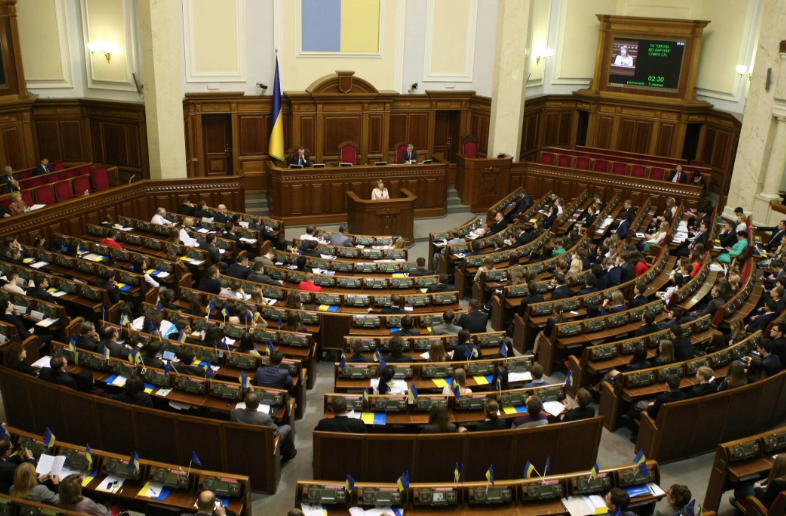This article was last updated on April 16, 2022
Canada: ![]() Oye! Times readers Get FREE $30 to spend on Amazon, Walmart…
Oye! Times readers Get FREE $30 to spend on Amazon, Walmart…
USA: ![]() Oye! Times readers Get FREE $30 to spend on Amazon, Walmart…Now that Ukraine is defending itself against a possible Russian incursion, now is a good time to take a look at how Ukraine's Parliament, the Verkhovna Rada or as it is commonly known, the Rada, functions. This is particularly pertinent given that President Petro Poroshenko dissolved the Rada in late August 2014, paving the way for early parliamentary elections.
Oye! Times readers Get FREE $30 to spend on Amazon, Walmart…Now that Ukraine is defending itself against a possible Russian incursion, now is a good time to take a look at how Ukraine's Parliament, the Verkhovna Rada or as it is commonly known, the Rada, functions. This is particularly pertinent given that President Petro Poroshenko dissolved the Rada in late August 2014, paving the way for early parliamentary elections.
In a poll taken in late July by the Kyiv International Institute of Sociology, a random sample of 2040 respondents living in 110 settlements throughout Ukraine, excluding Crimea, were asked who they would vote for. Here are the results:
Radical Party Oleg Lyashko – 12.3 percent
All-Ukrainian Union Fatherland – 9.7 percent
BLOW Vitali Klitschko Party – 6.4 percent
Citizenship Party – 6.4 percent
Solidarity Party – 6.2 percent
All Ukrainian Freedom Party – 3.9 percent
Strong Ukraine Party – 3.0 percent
Communist Party of Ukraine – 2.2 percent
Union of Self Party – 1.9 percent
Party of Regions – 1.5 percent
All other parties – 2.3 percent
A total of 16.7 percent of respondents would chose not to vote and 25.5 percent of respondents have not decided who they would vote for. Oleg Lyashko, the leader of the Radical Party which received the highest level of support, is currently a member of the Rada and was a journalist before he was first elected to the Rada in 2006. He was elected as leader of the Radical Party in 2011 and received 8.32 percent of the vote in the 2014 Ukrainian election.
Here is a chart showing the distribution of support for each party by region of the country:
Note, in particular, the fact that 37.9 percent of respondents in the east side of Ukraine where the hostilities are now concentrated would not take part in elections. As well, it looks like the voting public in Ukraine is highly fractured, a situation that will make it very difficult for a government to retain power. Petro Poroshenko, the current President of Ukraine, represents the Solidarity Party and was a founder of the Party of Regions that was swept away by the May Maidan movement. Even his support is very low in the east part of Ukraine, coming in at only 8.2 percent.
Ukraine's Parliament, the Verkhovna Rada, has 450 seats, and has been the site of a relatively large number of "incidents" that we'll see examples of in a moment. The building itself was erected in Kiev between 1936 and 1938. The original building was destroyed during World War II and was rebuilt in its current form between 1945 and 1947 in a style that was very similar to its former incarnation. The members of the Verkhovna Rada are elected through a system of universal suffrage by a secret ballot; the latest version had 85 members from the All Ukrainian Union Fatherland Party, 78 members from the Party of Regions, 41 members from the Ukrainian Democratic Alliance for Reform Party, 41 members from the Economic Development Party and 35 members each from the All Ukrainian Union or Freedom Party (Svoboda) and Sovereign European Ukraine faction.
First, let's look at a photo of the interior of the Verkhovna Rada during a peaceful and orderly sitting:
Now, let's look at three videos from Radio Free Europe that show what the Rada looks like during less peaceful sittings.
Here is a brawl that broke out on December 12, 2012 over the common practice of parliamentary deputies voting by pushing the voting buttons of absent colleagues:
Here is what the Rada looked like on April 27th, 2010 when a deal was struck that allowed Russia's navy to remain in Ukraine until 2042:
Here is are photos showing a fistfight that broke out on May 24, 2012 after a vote took place on a law that gave the Russian language the same status as Ukrainian in 13 out of 27 national regions:
In any case, it certainly appears that Ukraine's political system has deep-seated problems that will not be easily solved with or without Russian intervention. It will be interesting to watch the October 2014 Ukrainian parliamentary elections to see if it's business as usual in the Rada.
Click HERE to read more of Glen Asher's columns
You can publish this article on your website as long as you provide a link back to this page.



Be the first to comment